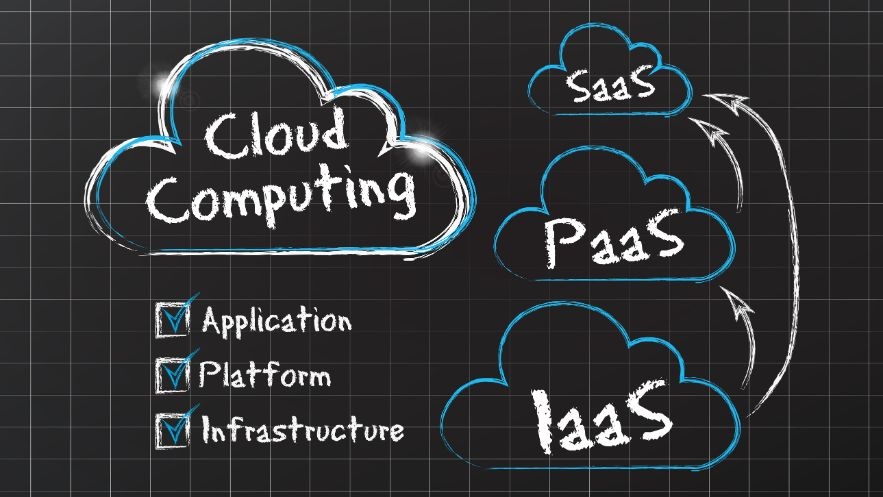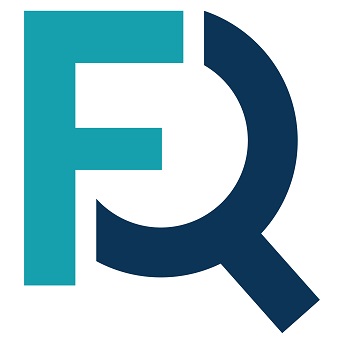1. The critical role of software license management
2. The importance of cybersecurity and compliance
3. Software license management: Building effective policies and processes
4. Considerations for successful software license management
5. Single Sign-On (SSO) and provisioning
6. The role of a software management solution
- Centralized license management
- Automated license compliance
- License optimization
- Enhanced security
- Improved reporting and analytics
- Integration with other systems
7. Summary
The critical role of software license management
The critical role of software license management cannot be overstated in today’s digital landscape. As technology continues to advance at a rapid pace, organizations are becoming increasingly reliant on various software tools and applications to streamline their operations and remain competitive in the market. Software licenses play a crucial role in this process as they govern the legal usage and distribution of software products.
A software license is essentially a contract between the software provider (licensor) and the end-user (licensee) that outlines the terms and conditions under which the software can be used. Organizations that effectively manage their licenses avoid costly compliance issues, optimize their software investments, and maintain control over their IT assets. In this article, we will explore the critical role of software license management and its impact on businesses.
The importance of cybersecurity and compliance
Effective SaaS license management goes hand-in-hand with robust cybersecurity and compliance practices. The principle of Least Privilege Access (LPA) dictates users should only have access to the software and data absolutely necessary for their roles. This minimizes potential attack surfaces and reduces the risk of unauthorized data access.
Role-based access controls (RBAC) enforce this principle, granting different employees access to appropriate systems based on their job functions (e.g., developers accessing engineering tools, marketers accessing marketing automation platforms).
Crucially, timely access removal is paramount for cybersecurity and compliance. When an employee leaves the organization or changes roles, it’s vital to revoke their access to any software licenses they no longer require. This prevents unauthorized access and aligns with regulatory frameworks that often mandate the swift removal of user permissions.
Beyond license management, strong cybersecurity measures are invaluable for any modern business. They help minimize the likelihood of data breaches, reducing financial and reputational damage while fostering customer trust. Additionally, effective cybersecurity can improve operational efficiency by reducing downtime caused by potential cyberattacks.
IT and security standards
Robust IT and security standards are foundational for effective software license management, ultimately bolstering cybersecurity and ensuring compliance. By prioritizing effective license management practices and conducting regular vendor reviews, organizations can leverage the power of SaaS solutions with confidence, knowing they’re taking proactive steps to mitigate security risks and ensure regulatory compliance.
Key standards for SaaS providers
- ISO/IEC 27001 for Information Security Management: This internationally recognized standard provides a comprehensive framework for managing information security risks, including the protection of sensitive data.
- SOC 2 (Type II): This auditing standard focuses on controls related to security, availability, processing integrity, confidentiality, and privacy. SaaS providers often undergo SOC 2 audits to demonstrate their commitment to data security.
- NIST Cybersecurity Framework (CSF) or NIST 800-53: These flexible frameworks provide guidelines for organizations to manage cybersecurity risks across various industries.
Importantly, by diligently implementing processes aligned with these standards – with a focus on RBAC, the principle of LPA, and thorough vendor reviews – organizations can often satisfy multiple controls across various security and compliance certifications. This streamlined approach demonstrates a comprehensive commitment to cybersecurity best practices.
Software license management: Building effective policies and processes
Gain control over your software assets and reduce costs with a well-structured software license management strategy. Effective software management helps avoid SaaS sprawl, ensures adherence to InfoSec and compliance controls, mitigates cost overruns, protects sensitive data, and more.
Organizations may tackle these challenges differently in any given area. However, all successful programs have some common policies and processes. Let’s outline them.
- Asset/License/Tool Inventory: This central hub stores details on all your software licenses and the tools they apply to. It prevents redundant purchases and fulfills compliance or Infosec requirements by maintaining a clear record of third-party vendors.
- Streamlined License Management: Imagine a documented (and ideally automated) process that oversees everything from software onboarding and offboarding to regular access reviews. This ensures a smooth and secure software lifecycle.
- Strategic Procurement: A well-defined procurement strategy considers the type of license your organization needs when acquiring new tools. This promotes cost-effectiveness and avoids licensing mishaps.
- Clear Roles and Responsibilities: A documented structure assigns ownership and accountability. This includes tool owners, delegated admins, default access permissions based on user roles, and a designated individual for tracking license availability, usage, and renewals.
- Data Classification System: Understanding the types of data processed by different software is paramount. This system, combined with the least privilege access principle, dictates who can access specific tools based on the data they handle, minimizing security vulnerabilities.
Considerations for successful software license management
As you are developing the policies and workflows that will be your organization’s approach to software license management, it is important to analyze its goals and requirements and how those can be best met. Below are some common considerations when creating a software license management framework.
Single Sign-On (SSO) and provisioning
SSO (Single Sign-On) and provisioning are powerful tools for managing how people access your software. They are also key features to consider during the software procurement process, as they can impact security, convenience, and cost. Keep in mind that SSO and provisioning might be extra add-ons or only offered with specific plans or tiers (e.g. Business vs. Enterprise) of a SaaS application.
SSO and provisioning often go hand in hand. For example, imagine adding a new employee to your team. Provisioning would make sure they have the necessary software licenses, while SSO means they can access those tools with a single login.
- SSO: The One-Stop Login: Think of SSO as the ultimate shortcut. It lets users access multiple software tools with a single username and password. This is great for both security and convenience – it means fewer passwords to remember and a more streamlined login process.
- Provisioning: Getting the Right Tools to the Right People: Provisioning is all about making sure users have the software licenses they need to do their jobs. It includes buying enough licenses and then assigning them to the right individuals or teams. This keeps things organized and helps you make the most of your software investments.
Automation challenges and solutions
Automating software license management tasks is a key way to increase efficiency and productivity, but it can be challenging for smaller companies to justify the expense of automation tools. Smaller companies typically have fewer software applications and a smaller workforce, making it difficult to defend the cost of automation tools. Additionally, smaller companies may not have the resources or expertise to implement and maintain automation solutions.
Larger companies, on the other hand, can more easily rationalize the investment in automation tools. The potential savings from improved efficiency and reduced licensing costs can be substantial. However, even larger companies may face challenges in implementing and maintaining an effective software license management automation system. These challenges include the need for integration with existing systems, the complexity of software licensing models, and the obligation for ongoing management and support.
Tool owners and delegated admins
To optimize software usage and ensure compliance, consider establishing two key roles: Tool Owners and Delegated Admins. Tool Owners take the lead, ensuring software contracts and licenses align with their department or team’s needs. They define access policies, determining who should utilize the tool and their appropriate permission levels. Tool Owners also understand the strategic value and impact of the software on business operations; their engagement is critical in setting up Delegated Admins for success in managing the tool effectively.
Delegated Admins, whether part of the IT team or the Tool Owner’s department, act as the technical executors, carrying out the tasks outlined by the Tool Owner. They benefit from clear process documentation, ensuring smooth tool operation even during personnel changes. This collaborative structure streamlines software license management, with Tool Owners providing business-focused direction and Delegated Admins driving secure and efficient execution.
The role of a software management solution
A software management solution can play a crucial role in license management by providing organizations with the tools and capabilities to effectively track, monitor, and manage their software licenses. Software management solutions help organizations achieve the following benefits:
Centralized license management
- Enables organizations to manage all software licenses from a single platform, ensuring a comprehensive view of all licenses across the organization.
- Simplifies the process of tracking license usage, expiration dates, and compliance status.
Automated license compliance
- Provides automated license compliance checks, ensuring that organizations are always in compliance with their software license agreements.
- Helps organizations avoid the risk of non-compliance, which can lead to legal and financial penalties.
License optimization
- Analyzes software usage patterns to identify underutilized licenses and potential areas for license optimization.
- Helps organizations optimize their software spend by identifying and reallocating unused or underutilized licenses.
Enhanced security
- Assists organizations in ensuring only authorized users have access to software licenses, minimizing the risk of unauthorized access and misuse.
- Provides visibility into software usage, allowing organizations to identify potential security vulnerabilities and take appropriate measures.
Improved reporting and analytics
- Provides detailed reports and analytics on software usage, compliance status, and license utilization.
- Helps organizations make data-driven decisions about software management and identify areas for improvement.
Integration with other systems
- Integrates with other IT systems, such as IT asset management (ITAM) and configuration management database (CMDB) systems, to provide a holistic view of the organization’s software assets.
- Enables organizations to streamline their software management processes and improve overall efficiency.
Summary
In an era driven by software innovation, effective software license management is paramount for businesses of all sizes. A well-structured software license management strategy empowers your organization to optimize software investments, safeguard data, streamline operations, and remain compliant with regulations. This isn’t simply a matter of avoiding penalties – it’s about enabling your business to operate efficiently and ethically.
The challenges and nuances of software license management may vary between organizations, but the benefits are undeniable. Think beyond simple tracking: prioritize centralized management, consider lifecycle automation, approach procurement strategically, define roles and responsibilities, and implement data classification for security. Whether relying on manual processes or leveraging a dedicated software management solution, the commitment to proactive license oversight is a cornerstone of successful operations and a responsible approach to the ever-evolving digital landscape.










